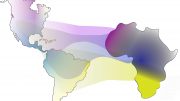
A recent study by the Environmental Working Group found chlormequat, a pesticide linked to health risks in animals, in 80% of participants, indicating widespread exposure through oat consumption and raising questions about its impact on human health.
A study by the Environmental Working Group found chlormequat, a pesticide associated with health risks in animals, in 80% of participants, highlighting the need for regulatory oversight and further research on its impact on human health.
A new Environmental Working Group peer-reviewed study has found chlormequat, a little-known pesticide, in four out of five people tested. Because the chemical is linked to reproductive and developmental problems in animal studies, the findings suggest the potential for similar harm to humans.
EWG’s research, published February 15 in the Journal of Exposure Science and Environmental Epidemiology, tested the urine of 96 people for the presence of chlormequat, finding it in 77 of them.
“EWG’s new study on chlormequat is the first of its kind in the U.S.,” said EWG Toxicologist Alexis Temkin, Ph.D, lead author of the study. “The ubiquity of this little-studied pesticide in people raises alarm bells about how it could potentially cause harm without anyone even knowing they’ve consumed it.”
Some animal studies show chlormequat can damage the reproductive system and disrupt fetal growth, changing development of the head and bones and altering key metabolic processes.
This research raises questions about whether chlormequat could also harm humans.
Increasing Exposure and Regulatory Concerns
For its study, EWG sourced urine samples collected between 2017 and 2023 from 96 people in the U.S. and tested them for chlormequat at a specialized lab in the United Kingdom.
The tests found chlormequat in the urine of more people and at higher concentrations in samples collected in 2023, compared to earlier years – suggesting consumer exposure to chlormequat could be on the rise.
Environmental Protection Agency regulations allow the chemical to be used on ornamental plants only – not food crops – grown in the U.S.
But since 2018, the EPA has permitted chlormequat on imported oats and other foods, increasing the allowed amount in 2020. Both regulatory changes took place under the Trump administration. Many oats and oat products consumed in the U.S. come from Canada.
In April 2023, in response to an application submitted by chlormequat manufacturer Taminco in 2019, the Biden EPA proposed allowing the first-ever use of chlormequat on barley, oats, triticale, and wheat grown in the U.S. EWG opposes the plan. The proposed rule has not yet been finalized.
“The federal government has a vital role in ensuring that pesticides are adequately monitored, studied, and regulated,” Temkin said. “Yet the EPA continues to abdicate its responsibility to protect children from the potential health harms of toxic chemicals like chlormequat in food.”
EWG’s Call to Action
EWG urges the Agriculture Department and the Food and Drug Administration to test foods for chlormequat and requests that the Centers for Disease Control and Prevention add chlormequat to its biomonitoring program. The organization also calls for more research on the effects of chlormequat on human health.
EWG conducted its own tests of oat-based foods in 2022 and 2023, finding chlormequat in numerous non-organic oat-based products. Organic oat products had little to no detections of the chemical.
Reference: “A pilot study of chlormequat in food and urine from adults in the United States from 2017 to 2023” by Alexis M. Temkin, Sydney Evans, Demetri D. Spyropoulos and Olga V. Naidenko, 15 February 2024, Journal of Exposure Science & Environmental Epidemiology.
DOI: 10.1038/s41370-024-00643-4









CHLORMEQUAT is NOT a pesticide, is a Plant Growth Regulator (I Googled it). The term pesticide normally indicates an insecticide poison. Calling it an herbicide would normally indicate a weed killing poison. This is NEITHER. Vague and inaccurate descriptions in an article like this unfortunately detracts from its credibility.
Derek Duckitt, You are exactly right. I noticed about half of the headlines which I scanned got it right, calling it a chemical, with the other half, including the normally-reliable scitechdaily, calling chlormequat a pesticide. Thanks.
Hi Jeffrey, see my below comment. While chlormequat is specifically a Plant Growth Regulator (PGR) that manages the growth of plants, it still is classified as a pesticide by regulatory agencies, including the U.S. Environmental Protection Agency (EPA), because it is a substance used to regulate or control the life processes of plants.
Hi Derek, I’m afraid you are mistaken. While chlormequat is specifically a Plant Growth Regulator (PGR) that manages the growth of plants, it is classified as a pesticide by regulatory agencies, including the U.S. Environmental Protection Agency (EPA), because it is a substance used to regulate or control the life processes of plants. The term “pesticide” encompasses a wide range of substances, including insecticides, herbicides, and PGRs, not limited to those that kill pests or weeds.
I don’t think it’s appropriate for a science journal to cite a particular country’s government’s definition of a “pesticide”, given that according to that logic, one would also have to reclassify bees as fish. While it might be legally permissible, it’s not scientifically accurate.
Just more depressing news about garbage going into our bodies because some people are so $%^& determined to make money they don’t even care if they poison their own children. Do you ever wonder what percentage of people in the top 10% (by wealth) have died of cancer that would NOT have killed them had that same 10% supported robust legislation to protect us from the people who would harm us with chemicals? The US alone spends 25% of government budget on military “defense”, but you can bet each dollar spent on “defense” has a lower marginal value (perhaps even negative!) for preserving US lives than money spent on healthy regulations and policies like healthcare subsidies. The insanity is mind-boggling.
Don’t worry. You are just a big number of atoms. They are regroup in 40 years and you become a plant. Then other person eats the plant and you become an other person.